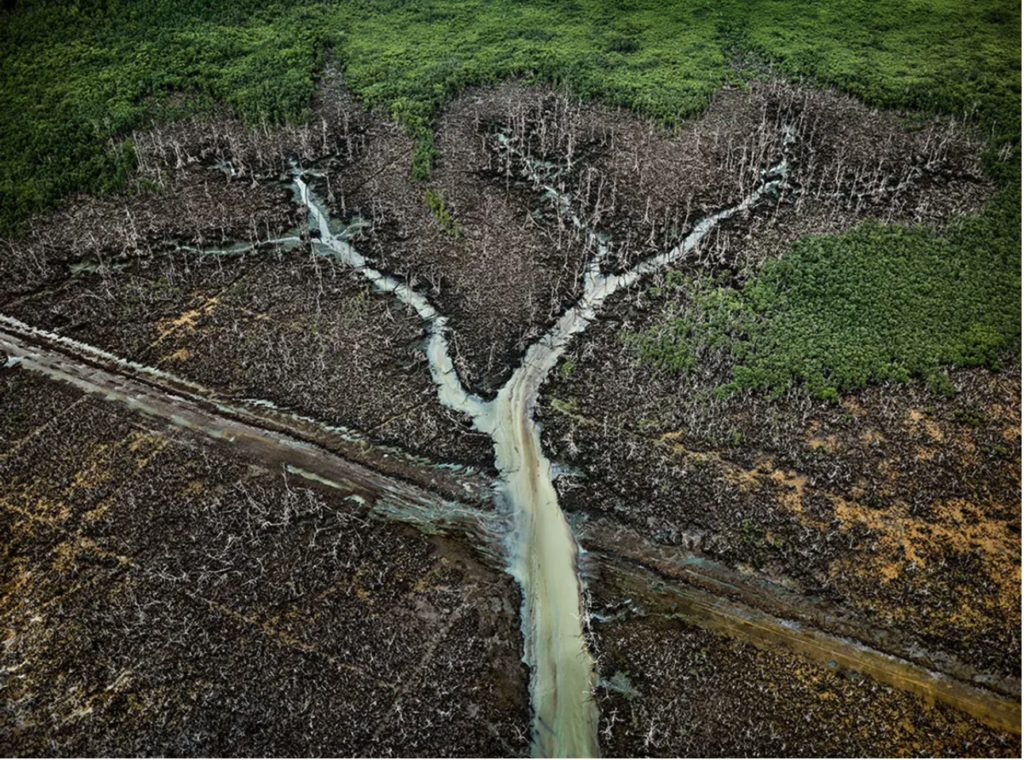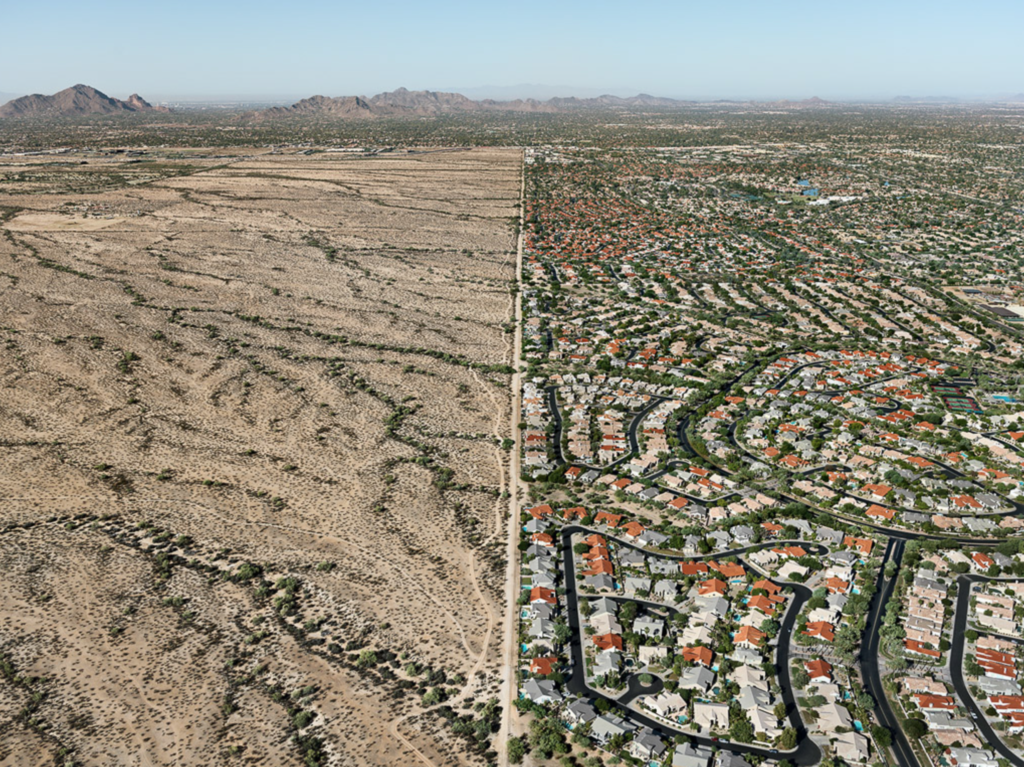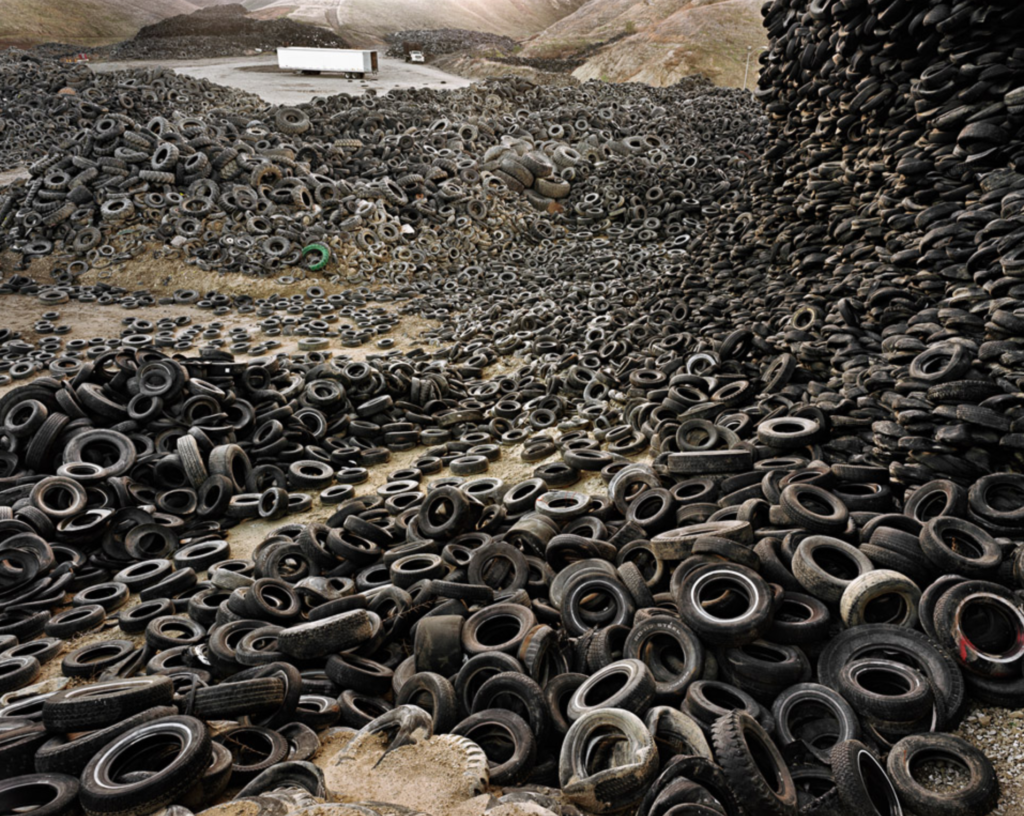“My earliest understanding of deep time and our relationship to the geological history of the planet came from my passion for being in nature.”
Edward Burtynsky OC RCA, born February 22nd 1955 (aged 69), is a Canadian photographer and artist best known for his large format photographs of the industrialisation of natural landscapes. His work depicts the notably developed locations around the world which have been affected the most by human influence through things such as pollution, over-population and over-farming. He acts as an advocate for the urgent environmental conservation needed, deeply entwining his work with the scars left by industrial capitalism and vividly revealing the environmental devastation not only in remote areas but cityscapes too. Burtynsky’s work is most oftenly connected to the concept of the sublime, established by the grand scale he works on as well as the disturbing context of rapid industrialisation.
Born in St Catharines, Ontario, his father was a Ukrainian immigrant who sought employment from the largest production line at the time – General Motors. When Edward was just 11 years old, his father purchased a darkroom alongside cameras from a widow who’s late husband was an amateur photographer, sparking an interest in him as a young boy. Given rolls of Tri-X and adapting to black and white print, he began to photograph events and take portraits of people at his local Ukranian community centre. Gathering 50 cents from each image he took, he spent his time travelling along his hometown capturing the pristine landscapes of his childhood which would later lead him into his interest of the natural landscape of destinations around the globe. Continuing into his early career, he formally studied graphic arts and photography until he received his diploma in Niagara College in Ohio. Not initially considering to carry on down the path of higher education, he eventually led onto a four-year undergraduate course, receiving his Bachelors in Photographic Arts, Ryerson Polytechnical Institute in Ohio, 1982. His earliest work resides in colour of locations across Ontario and Western Canada at the Ryerson’s university’s image centre. These images carry heavy influence from Ansel Adams, Edward Weston and Carleton Watkins. Some of his earliest original landscape photographs such as Landscape Study #1, North Carolina, USA (1979) and Landscape Study #2, Ontario, Canada (1981) served as portfolio submissions for Ryerson and displayed traces of his early exploration into the main themes of his work: human control over nature.
Now, Burtynsky used to take his photographs using a large format field camera before 2007 on large 4×5 inch sheet film, his editions ranging from 18 × 22 inches to 60 × 80 inches. Typically, his images are based at high-vantage points using natural topography, drones, helicopters or just elevated platforms. He currently uses a high-resolution digital medium format camera.
The Anthropocene Project:
The Anthropocene Project is a multidisciplinary body of work of three collaborating photographers: Edward Burtynsky, Jennifer Baichwal and Nicholas de Pencier. Not only does it involve a photobook of the images which capture humanity’s scarring on the landscapes of the globe in a sublime nature, but includes a major travelling museum exhibition, a feature-length documentary film and an interactive educational website to raise awareness of the consequences of civilisations radicalised consumerism. This project was launched in September 2018, combining scientific research with art to capture the most spectacular evidence of human influence, while taking time to reflect on the deeper meaning of what these profound transformations signify.









“We hope to bring our audience to an awareness of the normally unseen result of civilization’s cumulative impact upon the planet. This is what propels us to continue making the work. We feel that by describing the problem vividly, by being revelatory and not accusatory, we can help spur a broader conversation about viable solutions. We hope that, through our contribution, today’s generation will be inspired to carry the momentum of this discussion forward, so that succeeding generations may continue to experience the wonder and magic of what life, and living on Earth, has to offer.” – Edward Burtynsky
His other exhibitions:
- 1983–1985 Breaking Ground: Mines, Railcuts and Homesteads, Canada, USA
- 1991–1992 Vermont Quarries, USA
- 1997–1999 Urban Mines: Metal Recycling, Canada Tire Piles, USA
- 1993–Carrara Quarries, Italy
- 1995–1996 Tailings, Canada
- 1999-2010 Oil Canada, China, Azerbaijan, USA
- 2000–Makrana Quarries, India
- 2000–2001 Shipbreaking, Bangladesh
- 2004–2006 China
- 2006–Iberia Quarries, Portugal
- 2007–Australian Mines, Western Australia
- 2009–2013 Water Canada, USA, Mexico, Europe, Asia, Iceland, India
- 2016 Salt Pans
- 2014–2018 Anthropocene
Analysis of his work:

Edward Burtynsky’s image Ivory Tusks was shot on April 25, Nairobi, Kenya, 2016. The ideology behind this image is burning ivory tusks in order to prevent poaches from killing wild animals such as rhinos and elephants to sell these tusks and profit from inhumane acts. In the image, several roaring orange flames are captured swaying to the right making the image have a murky auburn tone to the overall atmosphere, setting a tone of anger and frustration. It involves the nature of the sublime due to the dangerous yet somewhat beautiful formation of the flames. The image includes a lot of detail and colour, producing a motion blur through the use of a slow shutter speed on a large format camera. This forces the viewer to adamantly sit by and watch the consequences of humanity’s greed and feel the guilt of how extreme it has become. The clouds of smoke bring an ominous tone throughout the image, filling the dark night time sky with anger and mystery. This provides a soft flow in the air contrasted against the uneven gravel scattered across the floor, symbolising how the burning of the tusks releases the animals from the impending deaths they would’ve had.
